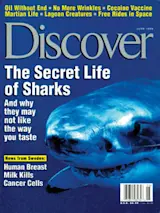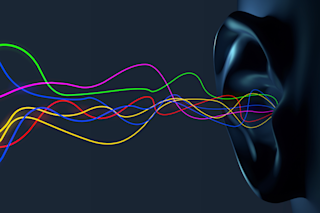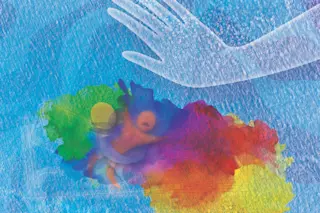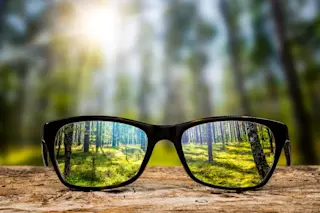By Sharron Sussman
When Mr. Leonard was admitted to the hospital, he couldn't meet my eyes. He wasn't shy--he simply couldn't raise his head. His spine was curved so far forward that when he sat, all I could see of him was the top of his head.
Ankylosing spondylitis, the condition that had brought him to this state, sometimes leaves its victims unable to eat or speak normally. In these patients, the stiffly flexed spine pins the chin and lower jaw firmly against the breastbone. The condition, a kind of arthritis that primarily affects the spine and sacroiliac joints, starts insidiously in young adulthood, and the pain is usually mild. But when the wave of inflammation has passed, the joints stiffen permanently, and the ligaments calcify and turn to bone. The once flexible spine becomes, in effect, a single bone from skull to pelvis.
If the condition is diagnosed early, the patient can do exercises to keep the spine upright. Exercises can't keep the joints from stiffening, but they can keep the spine from curving forward severely.
Mr. Leonard's stoop hadn't been diagnosed until his mid-forties, when a sharp-eyed internist had spotted the strangely segmented "bamboo" spine typical of ankylosing spondylitis on a chest X-ray. Mr. Leonard's forward curve was fixed at about 40 degrees beyond the upper limit of normal. It was far too late to alter the deformity with exercises or even with bracing. Still, Mr. Leonard was doing well. He was married, worked as a draftsman, and hiked on weekends. Active treatment had not been necessary.
A rear-end collision a year ago had changed all that. The impact thrust his brittle spine forward, fracturing several vertebrae. Despite attempts to brace the fractures, the forward curve in his spine became much worse.
Now he was being admitted to the spine center at the University of Minnesota Hospital where I was doing my residency in orthopedic surgery. My professor, John Feingold, planned to cut into bone at the base of his neck. By removing a wedge of spinal bone, we could swing Mr. Leonard's neck and head into an upright position. To heal solidly, his spine would have to be held securely in this position for two or three months.
As chief resident, I had to examine Mr. Leonard and prepare him for his operation the next morning. I needed to apply the halo that would hold his head in place after the operation. This device, a metal ring encircling the head just above the eyebrows, is fastened to the skull with pins. The halo is attached to an upper-body brace, a "halo vest."
We washed his hair, and I selected, prepped, and numbed four spots on his scalp and screwed in the pins through holes in the halo. With good purchase in the bone, I used a torque screwdriver on each pin to ensure the correct pressure.
When Mr. Leonard was brought to the operating room the next day, he was seated at the operating table, his forehead and halo resting comfortably on pillows. His neck and upper back were prepped and draped for surgery. He was sedated but alert enough to tell us if we hit a nerve.
Feingold injected a local anesthetic in the skin along the midline of the base of the neck. With a single stroke of the scalpel, he opened an eight-inch incision. Then he injected local anesthetic into the periosteum, the soft tissue directly adjacent to the bone, and peeled it away. The junior resident and I held back skin and muscle layers as he carefully nipped away bone until the pale, tough, glistening sheath around the spinal cord could be seen.
Removing the wedge of bone, while simple in concept, was dangerous in execution. If the bone-cutting instrument strayed too close to the spinal cord, it might damage nerve tissue. There was also the risk of injuring arteries that run up to the brain.
The anesthesiologist checked monitors and fiddled with the IV lines, making sure that Mr. Leonard was drowsy but rousable. After about an hour of chipping and probing, Feingold decided that enough bone had been removed. "He'll need to be a bit deeper now, Jack," he told the anesthesiologist. "This is going to stimulate him."
He grasped the halo through the sterile drapes and firmly tipped Mr. Leonard's head upright. A slight cracking sound and a muffled murmur of protest were heard from under the drape. The surgeon carefully inspected the line where the bony defect he had created was now closed.
"How is he doing, Jack? Do a neuro check." The surgeon held the halo firmly while the anesthesiologist asked Mr. Leonard to move his hands and feet. We rapidly sewed up the incision, slapped a sterile dressing on the wound, and removed the drapes. The orthopedic technician then slipped a pink plastic vest over Mr. Leonard's shoulders and attached the halo to it with bars and clamps.
Mr. Leonard was awake and looking dazed. The circulating nurse slipped a hospital gown on him. Then, as we supported him, he stood up and walked slowly over to the gurney for his ride to the recovery room.
Shortly after six the next morning, we stood at his bed.
"How are you feeling this morning, sir?" Feingold asked.
We watched carefully as Mr. Leonard regarded his surgeon and cleared his throat. "Not too shabby," he said. "That's a fierce neck ache, but the pain shots help."
"Can you wiggle your toes for me?" Feingold asked. He briefly checked the patient's grip, foot and ankle movement, and sensation over face, neck, and limbs. All appeared to be in order; Mr. Leonard seemed to have emerged intact. Feingold told him he'd be away lecturing over the next few days but that "my associate"--meaning me--would watch over his recuperation.
After rounds the team dispersed--Feingold to the airport, and the junior resident, intern, and medical student to the orthopedic clinic. I remained at the nurses' station, leafing through charts. Suddenly Angela, one of the nurses, came up to me and put her hand on my shoulder. "Have you talked to Mr. Leonard?" she asked. "He says there's been something wrong with his eyes since surgery.""Vision problem?" I repeated stupidly, prickles of dread rising along the back of my neck. "We were just in there."
Angela's calm voice grew even calmer. "He wasn't very clear about it, actually," she said. "Just that things look funny and they have since he was in the recovery room."
I was already halfway across the corridor, trying to think of what might be wrong. It didn't make sense--I had just watched him talking and making eye contact with Feingold. His eyes had moved in synchrony. His face was symmetrical; his speech was not slurred. I mentally ticked off evidence that the cranial nerves that controlled all these functions were intact, not stretched or injured by the dramatic repositioning of his neck.
Mr. Leonard was resting on his pillows, eyes closed. When I entered the room, he opened them and looked right at me. They looked normal, if a bit puzzled.
"Mr. Leonard, your nurse tells me you're having trouble seeing things," I began. "Can you tell me about it?"
"I can't really describe it, Doctor," he said.
"Is your vision blurred?" I asked.
"I don't think so," he said doubtfully. His forehead above the halo wrinkled unhappily.
"I think I'd better examine you," I told him. I needed to start somewhere, even though my ophthalmology skills were definitely rusty.
"Follow my finger with your eyes," I instructed, holding up an index finger to test the function of the muscles that moved the eyes and the nerves that controlled them.
"Your what?" he responded.
At that moment the hair on my scalp nearly stood on end. "I'll be right back," I said.
Less than an hour later, I had at least part of the answer. An ophthalmologist, a neurosurgeon, and a neuro-ophthalmologist rapidly answered my call and examined Mr. Leonard. The problem wasn't in his eyes. Instead, the part of the brain that processes input from the eyes had been injured, so everything "looked funny."
Mr. Leonard could see, but he couldn't understand or recognize what he was seeing. He had suffered a stroke in the visual cortex, which lies close to the base of the brain. The most likely culprit was a problem in the arteries that run through canals in the neck vertebrae to reach the back of the brain. But what happened? Had they kinked when we straightened Mr. Leonard's neck? Had a spike of bone squeezed an artery shut? Should we loosen his halo and flex his neck to relieve compression of the artery?
My consultants agreed that it was important to examine brain circulation. If there was a blockage, it needed to be cleared. After an urgent telephone call to the radiologist, we moved Mr. Leonard to the angiography suite.
His arteriogram, which traced blood flow in the brain, showed a normal pattern. The cut into the vertebra had changed the curve of his spine, but it had not distorted blood flow. There was no hint of lumpy plaques on the vessel walls, so a clot was unlikely. An artery had probably squeezed shut briefly, depriving brain tissue of oxygen and nutrients long enough to do damage. But how much damage? Was it permanent?
Dead neurons cannot be revived, but the injured neurons surrounding a patch of dead ones can sometimes recover. Increasing the supply of oxygen and nutrients, decreasing metabolism and its demands, suppressing inflammation with strong medications--all may have a role in the early treatment of brain injury. A trauma hospital across town had a hyperbaric chamber, which provides higher-than-atmospheric pressures and is typically used to treat decompression illness in divers. The chief of surgery there directed research projects testing its effectiveness for other conditions, including some types of stroke and brain injury. After conferring with him, our neurosurgeon recommended that we send Mr. Leonard over by ambulance and "dive" him on 100 percent oxygen.Three hours after Mr. Leonard's second 60-minute hyperbaric oxygen treatment, he became less confused about what he was seeing. His vision rapidly returned to its previous level. When he was discharged a few days later, his vision was normal. He probably would have recovered anyway, as many patients with transient brain injuries do. Hyperbaric oxygen has not panned out as a standard treatment for this kind of problem.
Twelve weeks later, X-rays showed that Mr. Leonard's bone had healed nicely. Feingold said it was time to remove the halo. I rounded up a screwdriver and wrench and went to the exam room. Mr. Leonard looked straight at me as I entered. "It's nice to see you," he said, smiling. I unscrewed the halo pins from his skull and taped dressings over the small wounds. That day he left wearing a plastic neck brace for added support, but within a few weeks his healed bone needed no further protection. Later, I heard Mr. Leonard had resumed all his former activities. His spine was now in a better position than before the accident. His ordeal, with all its risks, had been worth it.

The Arthritis FoundationThe Spondylitis Association of America














